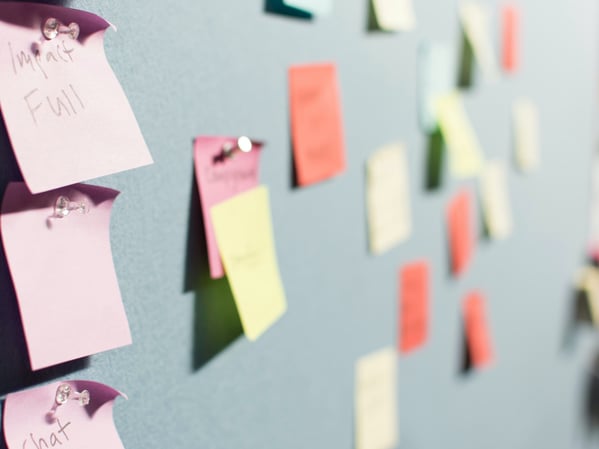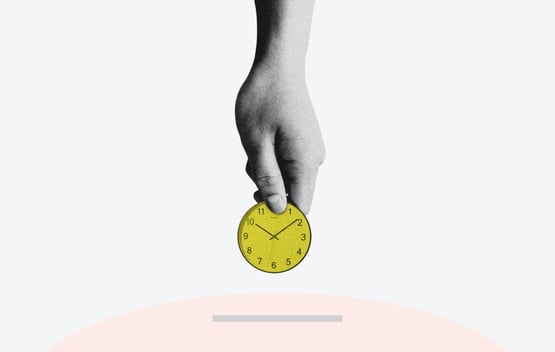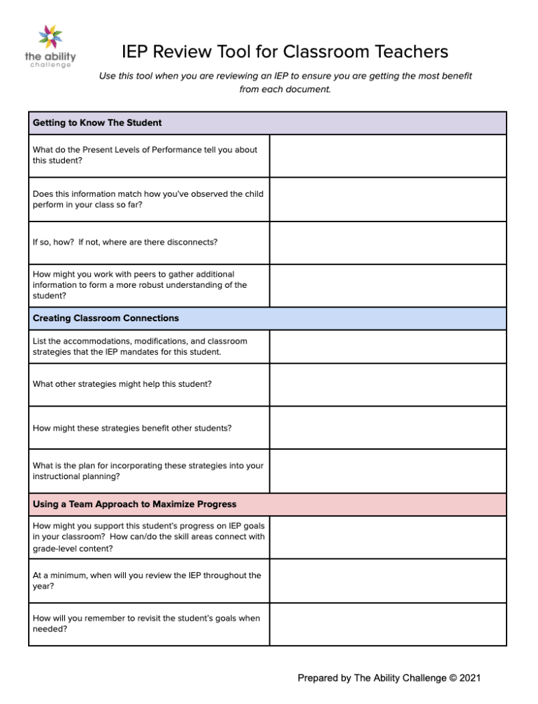The IEP: What Classroom and Specials Teachers REALLY Need to Know
Tools • 7 min read • Sep 13, 2021 9:30:19 PM • Written by: Sarah Sandelius

You’re back to school, the early mornings are becoming more routine, and you’re starting to get to know the students in your building. This season, in a good year, may feel chaotic, but at least there is usually rhythm in that noise. Not so, this year. Like last year, we’re heading into a second year with more unknowns. It can feel hard to get your bearings.
Look no further, we’ve got some suggestions to kick-start your planning for some of the students you may think to hold the most mystery – your students with disabilities. Instead of skimming the Individualized Education Program (IEP) when it comes across your desk, spend some time with it. Use it to better understand some of your students and mine it for strategies to help you engage everyone in deeper learning.

Present Levels Offer a Preview for Baseline (aka Getting to Know the Student)
The students in your class may present differently from the child described in last year’s IEP. However, that doesn’t mean disregard what you read. Present Levels of Performance (or whatever they are called in your area) describe how a student is performing at the time the Individualized Education Program (IEP) was written. Think of them as “pre-assessment data” that can help you determine what more you need to know and how to approach gathering timely baseline data for classroom planning.
For example, if an IEP describes a child who struggles with reading, but is very social, but that same child comes to school acting quiet and withdrawn, that should signal to you that you need to learn more. Perhaps you meet with the child’s family, have a 1:1 lunch with the student, and email the student’s prior teacher to discuss further. Want to learn more about a student, try our Diverse Learner’s Profile, here.

The Accommodations and Modifications Goldmine (or Creating Classroom Connections)
IEPs can also help you help the student better connect with the content of your lessons. Accommodations and modifications are not there just to create a labyrinth of logistics during testing time. Rather, they offer strategies for adjusting how you deliver instruction and remove learning barriers that might be in the way for students with certain learning needs.
Accommodations and modifications engage not only the student with the IEP, but they can also help other students access learning more seamlessly. For example, using flexible groupings for shared learning and building social connections is particularly helpful for students with disabilities who need behavioral support, as well as, more generally for students who have been out of the classroom for a while. Integrating multimedia and student choice are other accommodations that have a broad appeal for learners.
Creating a system to identify accommodations and modifications in IEPs and regularly use them in lesson planning can help both students with disabilities and their non-disabled peers succeed.

IEP Goals are Worth Revisiting (Using a Team Approach to Maximize Growth)
Depending on where and what you teach, you may be off the hook for technical IEP progress monitoring, but chances are you have access to invaluable information that can help students reach their full potential. A way to connect the dots? Become invested in a student’s annual goals.
Annual goals for students in most inclusion settings are what link a student’s current performance to where they want to go – focusing on the subject areas and skills needed to make progress in the general education curriculum. Ideally, the team of educators working with each student will break annual goals into chunks, sequence implementation, and share information with each other to maximize growth.
So at a minimum, it makes sense to align the individualized Education Program (IEP) review with unit or quarterly planning. Other opportunities to sneak a peek include before meeting with a parent and/or if a student is struggling.

Before you write off IEPs as “just a compliance measure” or “not your wheelhouse,” take a closer look. Meet with a special educator peer if you need more support understanding the lingo. IEPs contain rich information about students that will help you engage and support not just students with disabilities but all learners in your classroom.
We’ve created a tool for you…Check it out here!
Use the IEP tool to engage in deeper learning today!
Sarah Sandelius
Our Latest
Related Articles

September 27, 2021 | Tools
Classroom Behavior Woes? Try a Communication Roadmap
Learn how to identify and address classroom challenges with our Step-by-Step guide and downloadable ...

July 12, 2021 | Culture of Inclusion
Top 3 Administrators “Need to Knows” to Maximize Student Outcomes
The Journey to Inclusive Learning. Discover strategies for disrupting root causes, advocating for al...

August 2, 2021 | Tools
What’s the Difference Between an IEP and a 504 Plan?
Uncover the key distinctions between 504 plans and IEPs: A Comprehensive Guide to Understanding Spec...

